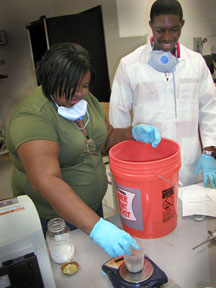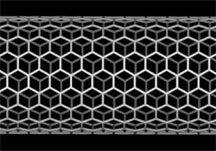
Primary Investigator – Jianren Zhou
Lunar-Martian in-situ regolith composites central to CRESSE research simulations
The primary objective of materials research within CRESSE is to develop low-cost, multifunctional and lightweight in situ structural microcomposite materials that have useful mechanical and thermal properties, as well as sufficient shielding to protect humans and microelectronics from harmful radiation during future space missions.
The ultimate goal is to produce in situ polymer matrix microcomposites on the surface of the moon or Mars for human habitats and other structures. Needed are materials that avoid excessive launch weight, minimize the payload weight from Earth and minimize the launch costs while maximizing the safety of the mission.
 The development of novel regolith stimulant/polymer microcomposites will fulfill CRESSE requirements for developing materials that, at a minimum, provide effective shielding o space radiation, be robustly capable of surviving long-term in the space environment, and reliably maintain mechanical integrity and thermal properties.
The development of novel regolith stimulant/polymer microcomposites will fulfill CRESSE requirements for developing materials that, at a minimum, provide effective shielding o space radiation, be robustly capable of surviving long-term in the space environment, and reliably maintain mechanical integrity and thermal properties.
CRESSE will develop fabrication procedures that are optimal for on-Earth processing and that are feasible for being used on the moon or Mars.
Overall CRESSE objectives will include:
(1) Development of in situ structural materials for shielding.
(2) Study of the radiation shielding effectiveness of the composites under various radiation conditions.
(3) Understanding radiation effects on properties of the potential habitat materials, and
(4) Integrating materials samples in beamline of lunar and Martian testbeds for realistic experiments.
Carbon Nanotube Composites
Radiation shielding materials must become lighter, more efficient and offer a higher durability and structural integrity for long-term solar space missions.
Recent research has initiated the development of carbon nanotubes polymetric composite materials for radiation shielding and structural applications. Such material systems will be designed, tested, analyzed and validated in the search for materials that will be feasible for fabrication and safe for use on the moon or Mars.

